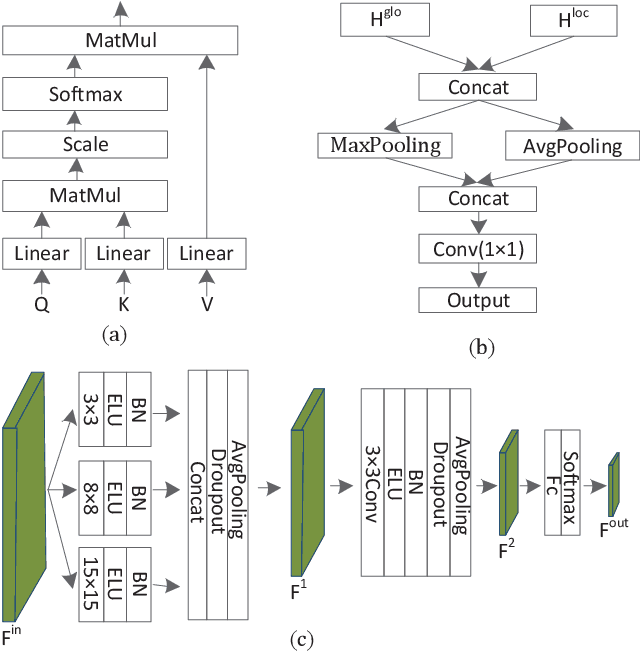Zhigang Wei
HLSFactory: A Framework Empowering High-Level Synthesis Datasets for Machine Learning and Beyond
May 01, 2024Abstract:Machine learning (ML) techniques have been applied to high-level synthesis (HLS) flows for quality-of-result (QoR) prediction and design space exploration (DSE). Nevertheless, the scarcity of accessible high-quality HLS datasets and the complexity of building such datasets present challenges. Existing datasets have limitations in terms of benchmark coverage, design space enumeration, vendor extensibility, or lack of reproducible and extensible software for dataset construction. Many works also lack user-friendly ways to add more designs, limiting wider adoption of such datasets. In response to these challenges, we introduce HLSFactory, a comprehensive framework designed to facilitate the curation and generation of high-quality HLS design datasets. HLSFactory has three main stages: 1) a design space expansion stage to elaborate single HLS designs into large design spaces using various optimization directives across multiple vendor tools, 2) a design synthesis stage to execute HLS and FPGA tool flows concurrently across designs, and 3) a data aggregation stage for extracting standardized data into packaged datasets for ML usage. This tripartite architecture ensures broad design space coverage via design space expansion and supports multiple vendor tools. Users can contribute to each stage with their own HLS designs and synthesis results and extend the framework itself with custom frontends and tool flows. We also include an initial set of built-in designs from common HLS benchmarks curated open-source HLS designs. We showcase the versatility and multi-functionality of our framework through six case studies: I) Design space sampling; II) Fine-grained parallelism backend speedup; III) Targeting Intel's HLS flow; IV) Adding new auxiliary designs; V) Integrating published HLS data; VI) HLS tool version regression benchmarking. Code at https://github.com/sharc-lab/HLSFactory.
HLSDataset: Open-Source Dataset for ML-Assisted FPGA Design using High Level Synthesis
Feb 17, 2023Abstract:Machine Learning (ML) has been widely adopted in design exploration using high level synthesis (HLS) to give a better and faster performance, and resource and power estimation at very early stages for FPGA-based design. To perform prediction accurately, high-quality and large-volume datasets are required for training ML models.This paper presents a dataset for ML-assisted FPGA design using HLS, called HLSDataset. The dataset is generated from widely used HLS C benchmarks including Polybench, Machsuite, CHStone and Rossetta. The Verilog samples are generated with a variety of directives including loop unroll, loop pipeline and array partition to make sure optimized and realistic designs are covered. The total number of generated Verilog samples is nearly 9,000 per FPGA type. To demonstrate the effectiveness of our dataset, we undertake case studies to perform power estimation and resource usage estimation with ML models trained with our dataset. All the codes and dataset are public at the github repo.We believe that HLSDataset can save valuable time for researchers by avoiding the tedious process of running tools, scripting and parsing files to generate the dataset, and enable them to spend more time where it counts, that is, in training ML models.
An Olfactory EEG Signal Classification Network Based on Frequency Band Feature Extraction
Feb 05, 2022



Abstract:Classification of olfactory-induced electroencephalogram (EEG) signals has shown great potential in many fields. Since different frequency bands within the EEG signals contain different information, extracting specific frequency bands for classification performance is important. Moreover, due to the large inter-subject variability of the EEG signals, extracting frequency bands with subject-specific information rather than general information is crucial. Considering these, the focus of this letter is to classify the olfactory EEG signals by exploiting the spectral-domain information of specific frequency bands. In this letter, we present an olfactory EEG signal classification network based on frequency band feature extraction. A frequency band generator is first designed to extract frequency bands via the sliding window technique. Then, a frequency band attention mechanism is proposed to optimize frequency bands for a specific subject adaptively. Last, a convolutional neural network (CNN) is constructed to extract the spatio-spectral information and predict the EEG category. Comparison experiment results reveal that the proposed method outperforms a series of baseline methods in terms of both classification quality and inter-subject robustness. Ablation experiment results demonstrate the effectiveness of each component of the proposed method.
 Add to Chrome
Add to Chrome Add to Firefox
Add to Firefox Add to Edge
Add to Edge